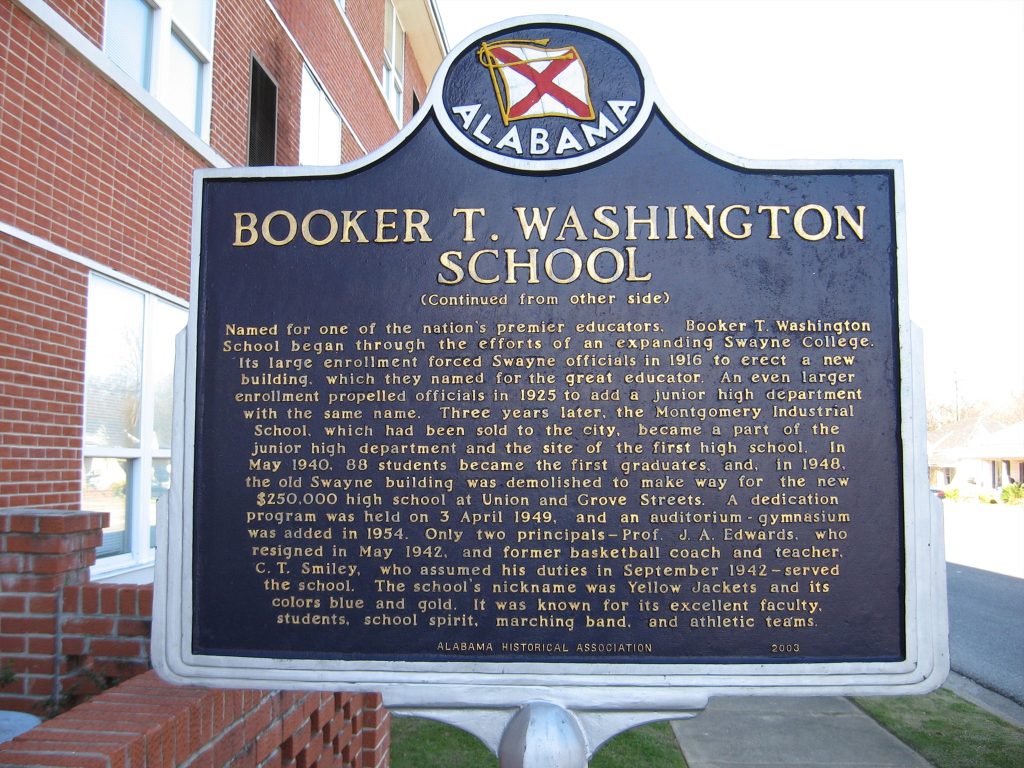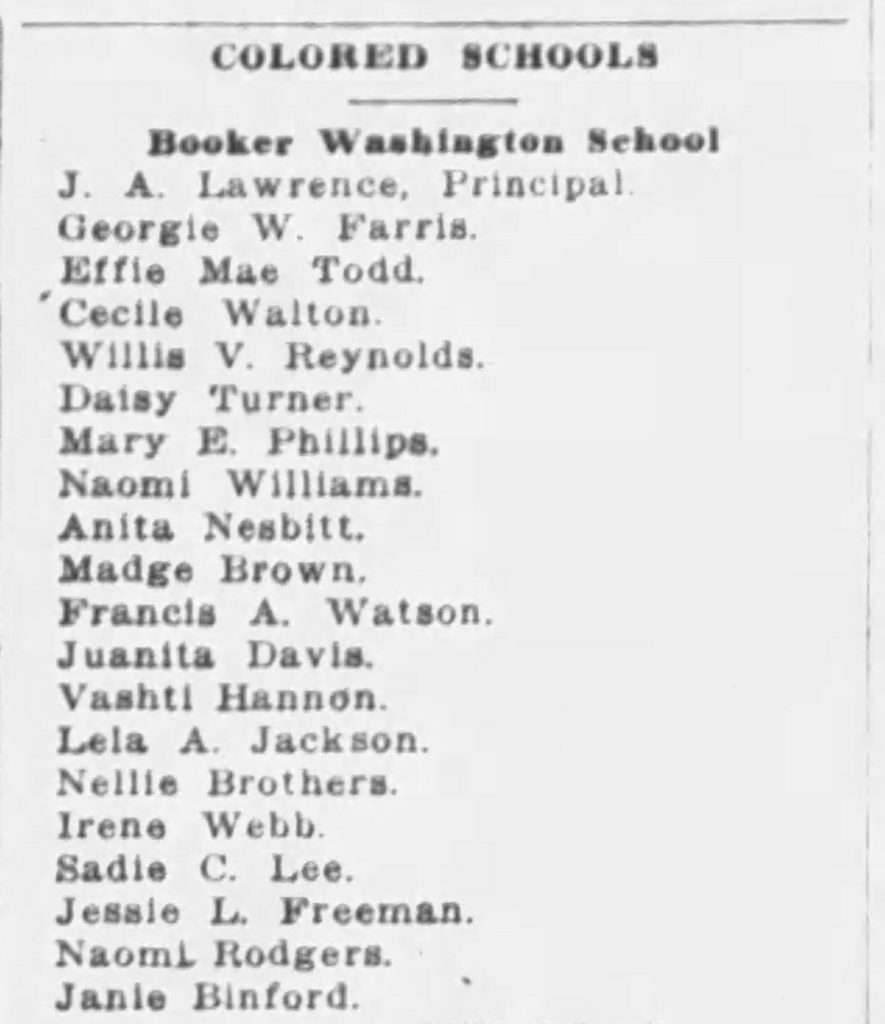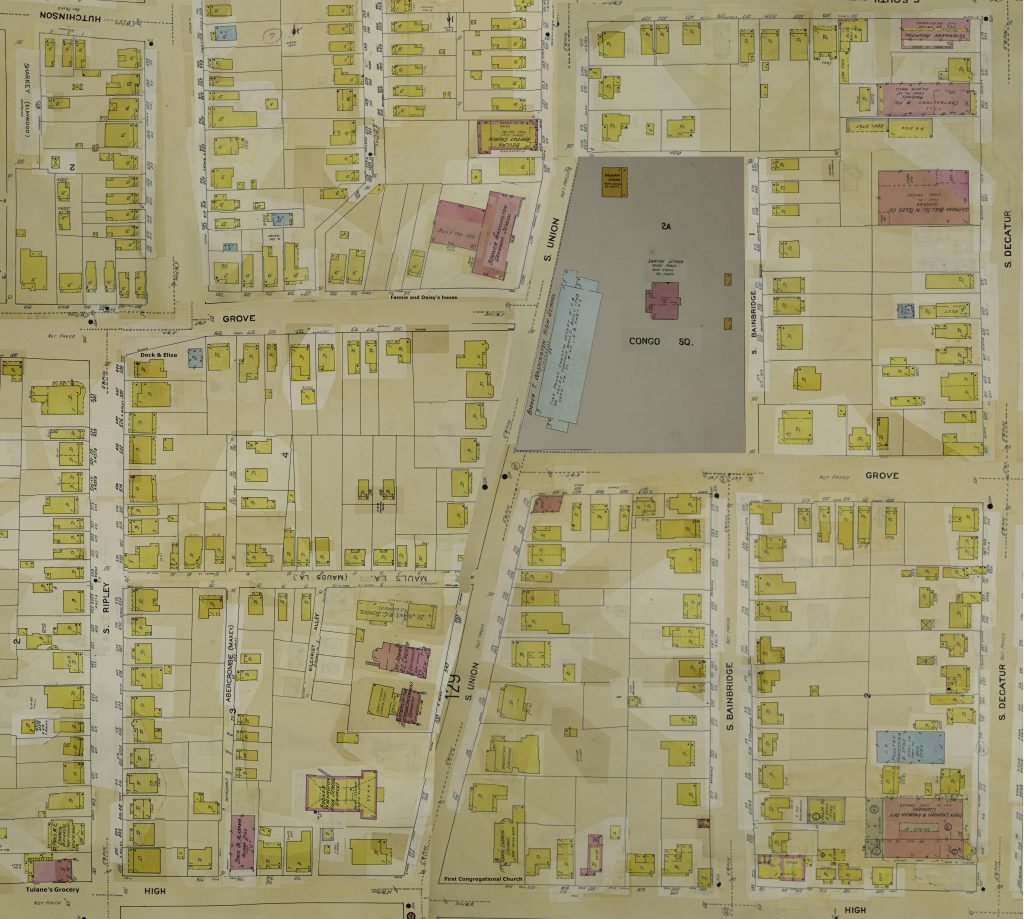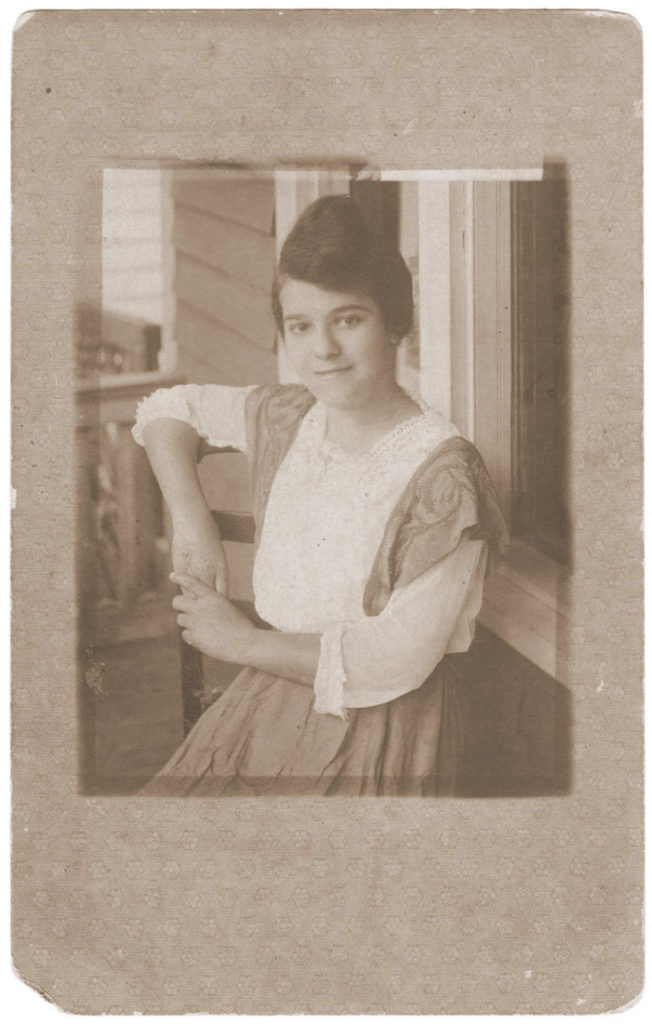
Fannie’s younger sister Daisy graduated from State Normal School in 1912 at age 20. She began teaching the following year at the State Normal School. She taught several years in Selma, Alabama and had to board there, only coming home for holidays and summer. In 1919 she was assigned to teach at Booker T. Washington elementary school, right next door to her home.
I wonder if she was happy about that or if she was sorry to lose the the freedom she probably had and the friends she had made in Selma. Her lost love, Duncan IRBY was in Selma, which could have made it harder or easier to leave, depending on if she had already refused his proposal of marriage.
A Short History of Booker T. Washington School

“Booker T. Washington School Named for one of the nation’s premier educators, Booker T. Washington School began through the efforts of an expanding Swayne College. Its large enrollment forced Swayne’s officials in 1916 to erect a new building which they named for the great educator. And even larger enrollment propelled officials in 1925 to add a junior high department with the same name. Three years later, the Montgomery Industrial School, which had been sold to the city, became a part of the junior high department and the site of the first high school. In May 1940, 88 students became the first graduates, and, in 1948, the old Swayne building was demolished to make way for the new $250,000 high school at Union and Grove Streets. A dedication program was held on 3 April 1949, and an auditorium-gymnasium was added in 1954. Only two principals – Pro. J. A. Edwards, who resigned in May 1942, and former basketball coach and teacher, C.T. Smiley, who assumed his duties in September 1942 – served the school. The school’s nickname was Yellow Jackets and its colors blue and gold. It was known for its excellent faculty, students, school spirit, marching band, and athletic teams.” Information from Alabama Historical Association markers 2003

Although Booker T. Washington school was built to relieve the horrendous overcrowding at Swayne School, there were 100 students to a classroom at the time with some on half days and still all of the African American students that wanted to attend school were not able to squeeze in, almost immediately Booker T. was also overcrowded. According to an article in the Montgomery Advertiser of October 2, 1917, “Negro Schools Crowded
At the negro (sic) schools, there is hardly room for the proverbial one more. Booker Washington school, which includes the three schools – old Swayne school, the new eight-room brick building and a cottage in the school yard; there are 1,022 pupils. Day street has an enrollment of 556; Cemetery Hill, 292, and Vesuvius, 124.”
More about Swayne School when we get to S.

Many African American schools were named after Booker T. Washington, who rose from slavery to be the head of Tuskegee Institute, in Tuskegee Alabama. You can click on his name for a look at his autobiography.
More posts about Daisy Pearl Turner
Daisy Turner Dead at 70. Nov 24, 1961
Daisy Turner and Duncan Irby
Joe Turner – Land, Mules and Courts

I love the habit of having those historical signs in the US. Not just a name, but telling a whole story. I think it’s a great way of engaging with history.
The Multicolored Diary
I find them quite handy when I’m researching too. The only ones I have seen near me are remembering Civil War battles that took place in Atlanta.
I think I would like to meet Booker T Washington. He might like to go for one of our long walks….sounds like he had quite the journey.
I hit enter before I filled out all the fields.
Not sure if he’d been up for long walks after all the walking he did in his boyhood. I really found his autobiography interesting.
I love the posts.
Thank you!
100 students to a classroom. Wow.
My thoughts exactly.
Kristin, I so look forward to reading your A to Z series during April. I am ever impressed at how you intertwine family, community, and cultural history. I cannot even imaging how much research and organization is needed for even one post. (Actually I can, and that is why I’m impressed.) Your writing brings alive all the connections that create a community.
I’ve done so much research on each of the women, my problem was to cut down the amount I wanted to share and tie it in with other parts of the club.
Those were some amazing classroom sizes — a tribute to Daisy’s teaching abilities to handle so many students! The map is excellent, showing how close all the family locations were.
I can’t even imagine having so many students in one class room. They were sometimes on half days so that would cut it down to 50 per class, I guess. Still awful.
Booker T Washington is supposedly an 8th cousin, 3 times removed, and I have yet to delve into that.
I am enjoying your story telling and history. I’m glad I found your blog.
I hope you are able to delve into to that and figure it out. I have found it difficult to go back to fifth cousins unless I had researched that branch of the family. Most of my dna cousins remain a mystery.
So the members of the Edelweiss Club made up half the teachers at the school. Oh, to have been a fly on the wall at their gatherings! Daisy didn’t have far to walk, did she?! Do you know how many years she taught at the Booker T. Washington elementary school? And whether she eventually married, despite having lost Duncan?
I thought fifty students to a class, as our son had in elementary school in India, was bad, but a hundred! They would all have had to be very well-behaved and do as they were told. I suppose in those days there was a lot of recitation out loud. It would have been extremely hard to give extra help to those who were struggling. And the marking!
Daisy never married and neither did Duncan. She only taught one year. After her older sister Fannie married and moved to Detroit, Daisy worked at the Tulane Groceries as a clerk. Then the whole family moved to Detroit and an addition was built on the elementary school. In Detroit Daisy worked as a porter at Annis Furs. I knew my aunt Daisy as she didn’t die until 1961 when I was fifteen.
I can’t imagine such a full classroom. There must be descriptions somewhere though and eventually I’ll find one.
I had a beloved great aunt named Daisy. She never taught school (she was the telephone operator for many years), but we used to drive by a pig pen out in the country that used to be the one-room school she attended, and I was so fascinated by tha!
Daisy must have been a popular name back then.
I hope the school had been removed and a pig pen built on the spot and that the pigs didn’t have free run of the old school.
I used to show my daughter where she was born, except it was now a parking lot. She was not amused and figured she was actually born in a parking lot. I regret not getting a photo of the house. We didn’t take so many pictures in the 1970s.
Classes of 100 students????? Dear me!!!!
I hope those classes were split so that “only” 50 would come in the morning and the other 50 in the afternoon. I wish I’d talked about that with my Aunt Daisy!